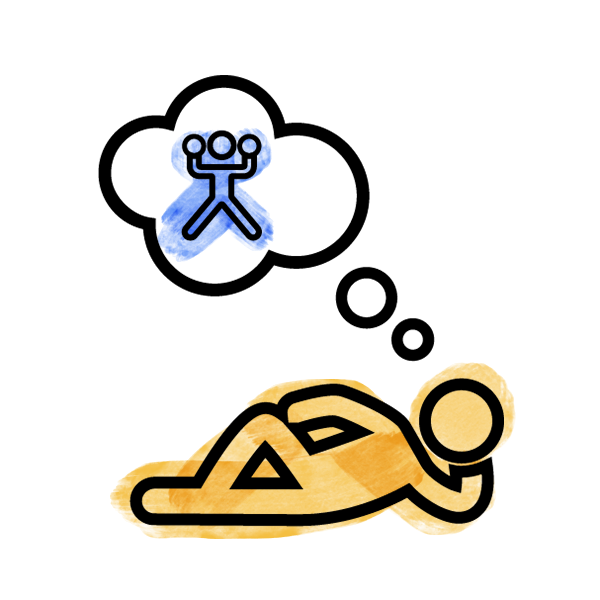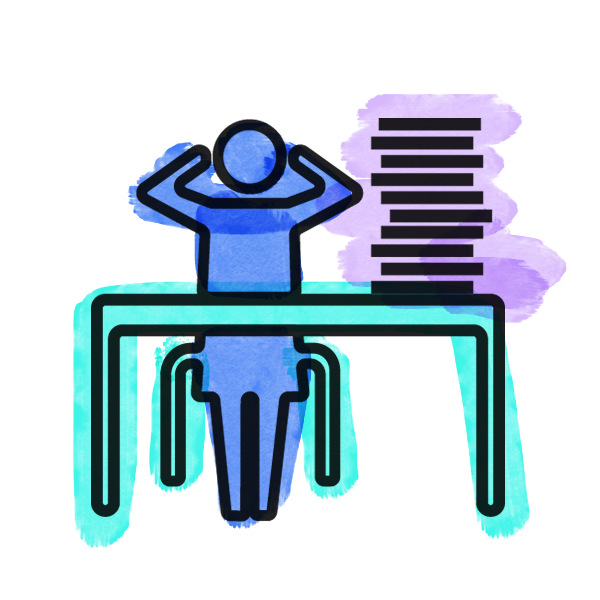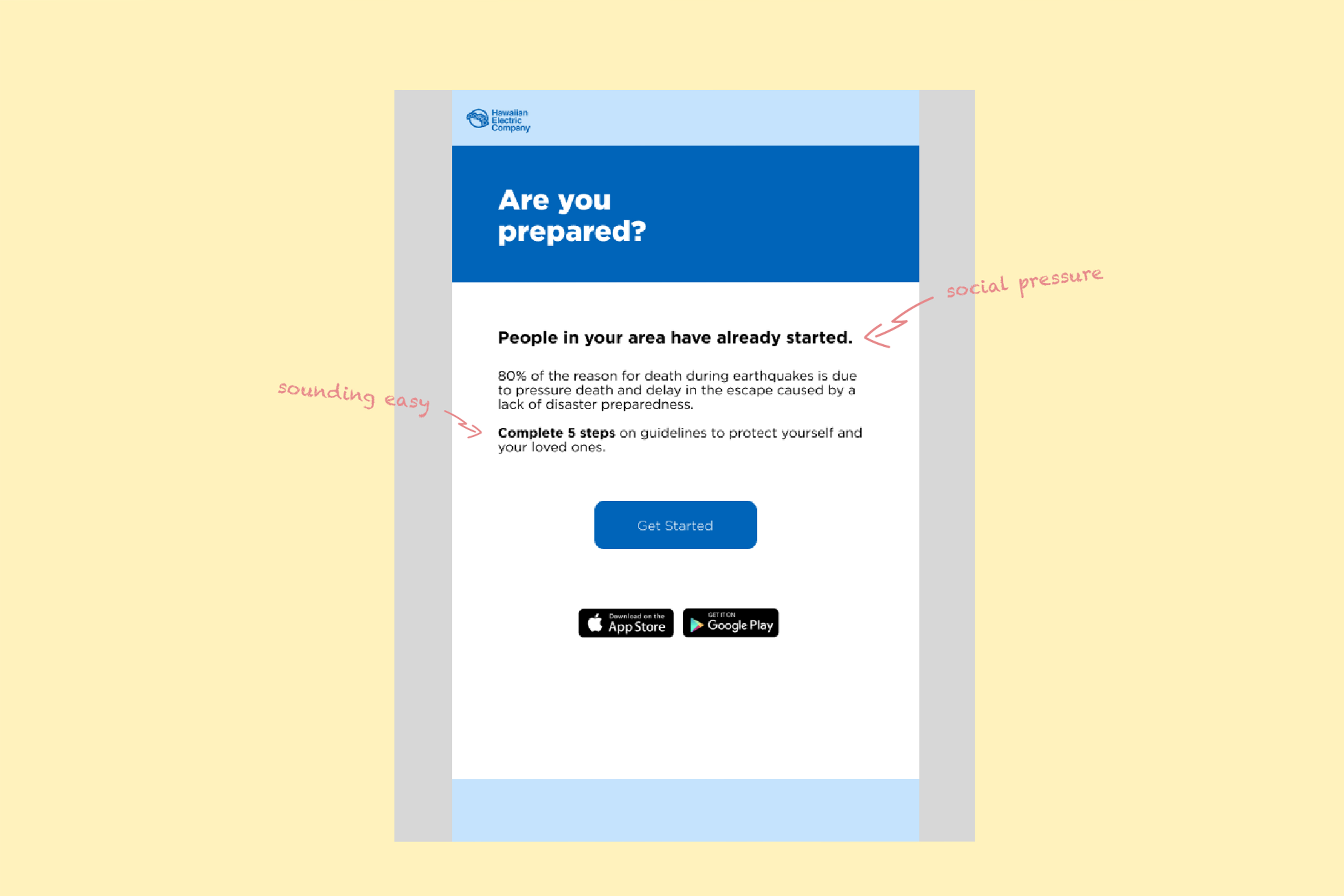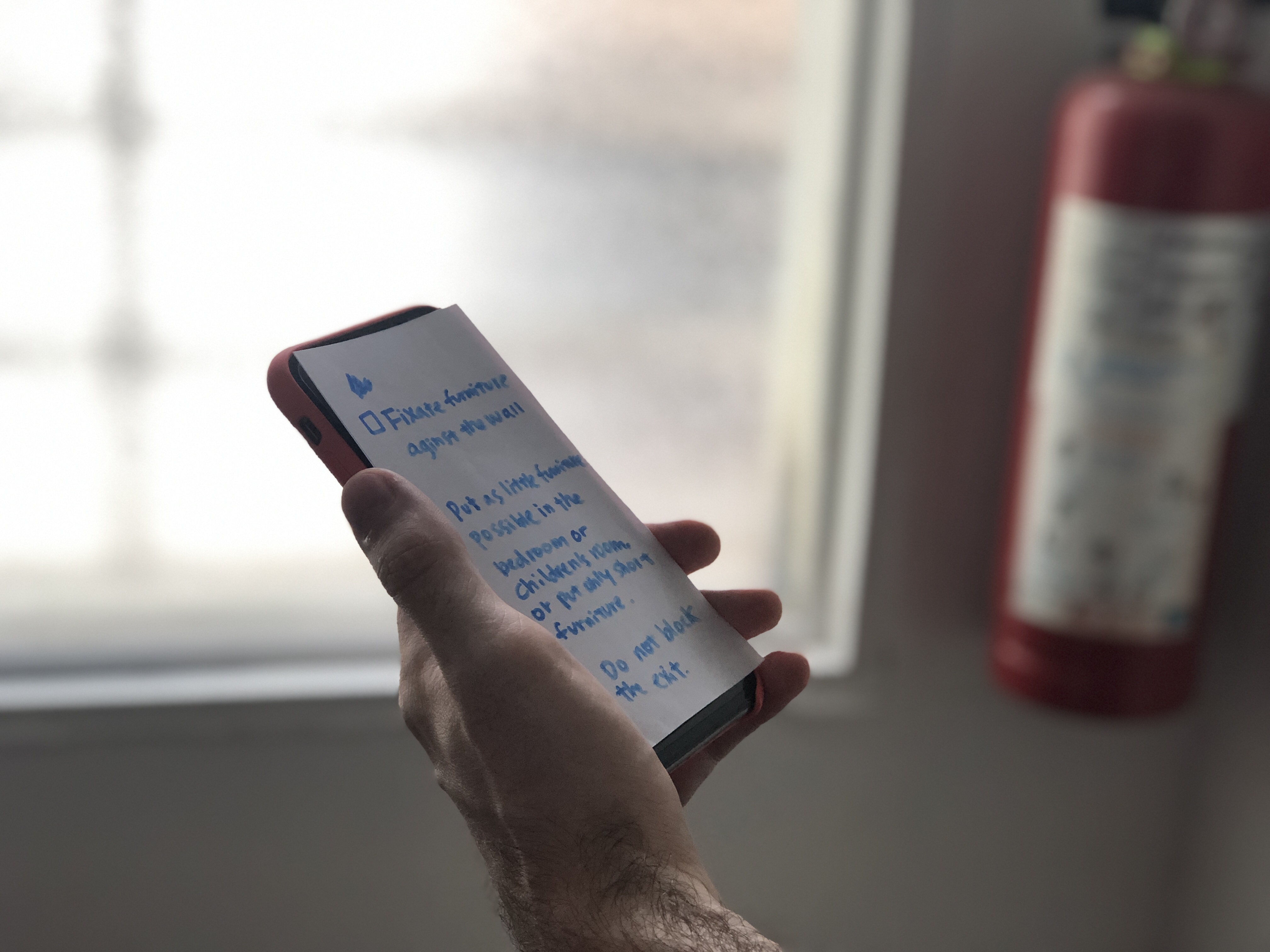Disaster Preparedness Guidline

Behavioral Design
1 Week | Jul 2020 | Copenhagen Institute of Interaction Design
1 Week | Jul 2020 | Copenhagen Institute of Interaction Design
Individual Project
Tool: Behavioural Design Tool Kit by GRID Impact, Adobe Illustrator
Tool: Behavioural Design Tool Kit by GRID Impact, Adobe Illustrator
Project details: Learning Behavioural Design from Discover, Concept, Prototype to Experiment
Advisor: Alexandra Fiorillo (GRID Impact), Sarah Fathallah (GRID Impact)
Advisor: Alexandra Fiorillo (GRID Impact), Sarah Fathallah (GRID Impact)
What is Disaster Preparedness Guideline?
Disaster Preparedness Guideline is designed to help the people of Japan to be well prepared for earthquakes. There is also design intervention apart from the app to help people complete tasks before and during the preparation process to reach the completion of their preparations
Problem Definition
Although people are somewhat aware of the need to prepare for natural disasters, most people are not properly prepared for them.
Behavioral Hypothesis
 Present bias:
Present bias:We pay much more attention to cost and benefits that happen now, and tend to ignore the long-term consequences.

Projection bias:
A self-forecasting error, where we overestimate how much our future selves will share the same beliefs, values and behaviors.

Intention-action gap:
The disconnect between what a person wants to do and what they actually do.

Hassle factor:
Minor bassles can prevent u s from taking actions with large payoffs.
1/ If the list is too long or complicated, people will be demotivated and will procrastinate on their actions.
2/ People ignore the long-term risks and don’t think that the risks might get higher.
3/ People are reluctant to prepare because they can’t properly assess the costs in the far future.
2/ People ignore the long-term risks and don’t think that the risks might get higher.
3/ People are reluctant to prepare because they can’t properly assess the costs in the far future.
Selected intervention moments
1/ When people were reminded of disaster preparedness
2/ During the process of completing the tasks on the list
2/ During the process of completing the tasks on the list

1/ The first intervention was an email from the utility company along with the bill, in which they highlighted how much risk there was in the event of a natural disaster.

2/ Also, when it comes to heavy tasks like moving furniture, people are very demotivated, so I wanted to eliminate the delay between decision and action by putting soft social pressure on them.
Using the framework of Behavioral Design

Image by GRID Impact
In this project, the process was conducted in accordance with the framework of Behavioral Design. This began with a deep understanding of how the environment and context influence people’s decisions and actions.
Based on the research finding that a lack of preparation for earthquakes causes most of the worst events during earthquakes incidents.
User Testing

I wanted to learn when the earliest time in the process that decision-making and action collide so that I could prioritize those moments to nudge. Through this, I learned that downloading is not easy at first, and it is better to keep users on the same platform. Also, removing the delay is very important because the user knows it may take days to complete. After the user test, I changed the order of the tasks as an easy task comes first.